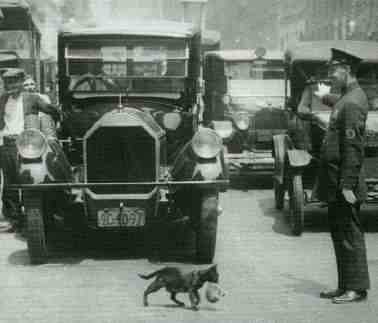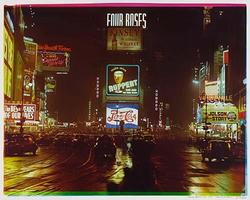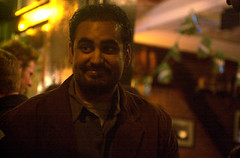Ethics of Photojournalism in the pre-digital age
 Photographic manipulation and the questions of ethics aren’t a recent creation of the Photoshop era. As the Museum of Hoaxes shows us it’s as old as photography.
Photographic manipulation and the questions of ethics aren’t a recent creation of the Photoshop era. As the Museum of Hoaxes shows us it’s as old as photography.In the above picture: In 1925, as the story goes, New York News photographer Harry Warnecke was out looking for a feature and happened to see a traffic cop stopping traffic to allow a cat and her kitten to cross the street.
A humorous and amusing image that Warnecke was lucky to come across and insightful enough to snap it from just the right position. He named it “Cat Crossing the Street in Traffic” and turned it in later that night. At least that’s the story, the truth is, Warnecke set up the photograph.
Warnecke was out looking for features and a policeman did stop traffic to let an animal cross the street (I say animal, because I believe the real incident involved a duck). But he wasn’t there to see it, rather he heard about it much later that same day and decided it was such a perfect image that he had to re-enact it. With the assistance of a policeman and a stray cat, he conjured up the set and created the scene.
It’s unclear to me, whether Warnecke tried to pass off the image as real or not. However the ethical question remains.
A little more about Warnecke...
You may recognize Warnecke’s name as a pioneer in color photography -- in the mid-1930s he designed a special camera that used three plates, the red, blue and yellow-- a camera which he used for The New York News.)
[Post to Del.icio.us]









<< Home